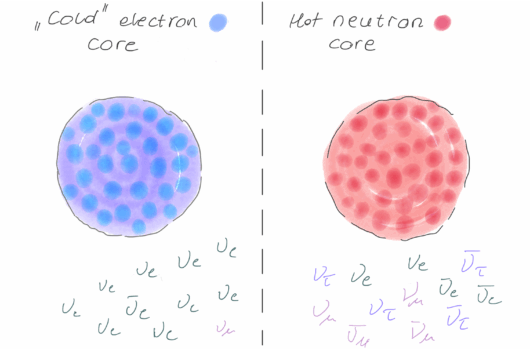Neutrino heating in 1D, 2D, and 3D core-collapse supernovae: characterizing the explosion of high-compactness stars Open Access
Neutrino heating in 1D, 2D, and 3D core-collapse supernovae: characterizing the explosion of high-compactness stars Open Access
View
Abstract
Massive stars can end their lives with a successful supernova explosion (leaving behind a neutron star or, more rarely, a black hole), or a failed explosion that leaves behind a black hole. The density structure of the pre-collapse progenitor star already encodes much of the information regarding the outcome and properties of the explosion. However, the complexity of the collapse and subsequent shock expansion phases prevents drawing a straightforward connection between the pre-collapse and post-explosion properties. In order to derive such a connection several explodability studies have been performed in recent years. However, different studies can predict different explosion outcomes. In this article, we show how compactness, which is related to the average density of the star’s core, has an important role in determining the efficiency of neutrino heating, and therefore the outcome of the explosion. Commonly, high-compactness progenitors are assumed to yield failed explosions, due to their large mass accretion rates, preventing the shock from expanding. We show by analysing 150 2D FLASH and FORNAX simulations and 20 3D FORNAX simulations that this is not the case. Instead, due to the rapid increase of neutrino heating with compactness, high-compactness progenitors lead to successful shock revival. We also show that 1D+ simulations that include -driven convection using a mixing-length theory approach correctly reproduce this trend. Finally, we compare 1D+ models, which we show can reproduce some aspects of multi-D simulations with reasonable accuracy, with other widely used 1D models in the literature.





